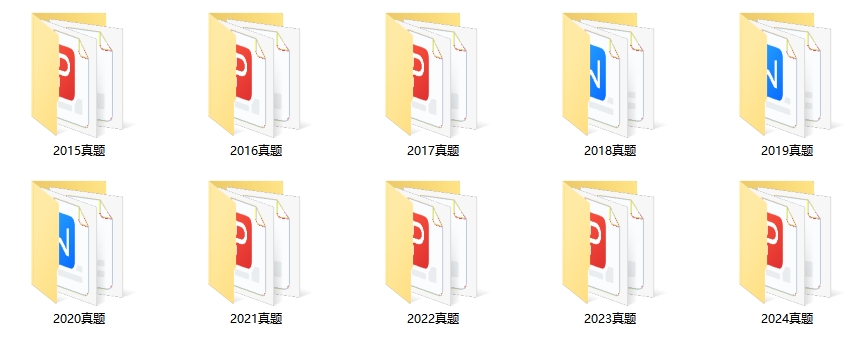问题标题:环境恶化的代价是什么?
年份:2019
学生等级:本科生
来源:ICM
问题
经济理论经常忽视其决策对生物圈的影响,或假设其资源或容量无限。这种观点是有缺陷的,环境现在正面临其后果。生物圈提供了许多自然过程来维持人类生活的健康和可持续的环境,这些过程被称为生态系统 服务。例子包括将废物转化为食物、水过滤、种植食物、植物授粉以及将二氧化碳转化为氧气。然而,每当人类改变生态系统时,我们都有可能限制或消除生态系统服务。局部小规模的土地利用变化,例如修建几条道路、下水道、桥梁、房屋或工厂,其影响可能看起来可以忽略不计。除了这些小型项目之外,还有大型项目,例如建造或搬迁大型公司总部、修建全国范围的管道或扩建或改造水道以扩大商业用途。现在想想这些项目对一个地区、国家和世界的影响。虽然这些活动单独来看对于生物圈整体的功能潜力来说似乎微不足道,但累积起来却直接影响着生物多样性并造成环境恶化。
传统上,大多数土地利用项目不考虑生态系统服务的影响或变化。减轻土地利用变化的负面结果的经济成本:河流污染、空气质量差、危险废物场、废水处理不当、气候变化等,通常不包括在计划中。是否有可能对土地利用开发项目的环境成本进行估值?这些项目成本中如何考虑环境退化?一旦生态系统服务被计入项目的成本效益比,就可以确定和评估项目的真实和全面估值。 您的 ICM 团队已被聘请创建一个生态服务估值模型,以了解在考虑生态系统服务时土地利用项目的真实经济成本。使用您的模型对不同规模的土地利用开发项目进行成本效益分析,从小型社区项目到大型国家项目。根据您的分析和模型设计评估模型的有效性。您的建模对土地利用项目规划人员和管理者有何影响?您的模型可能需要如何随时间变化?
您的提交应包括:
单页摘要表,
您的解决方案不得超过 20 页,加上摘要最多可达 21 页。
评委希望获得完整的参考文献列表以及文内引用,但在评审过程中可能不会考虑附录。
注意:参考文献列表和任何附录均不计入 21 页的限制,并且应在完成的解决方案后出现。
参考:
Chee, Y.,2004。生态系统服务价值评估的生态学视角。生物保护 120,549-565。
Costanza, R., d'Arge, R., de Groot, R., Farber, S., Grasso, M., Hannon, B., Limburg, K., Naeem, S., O'Neill, RV, Paruelo, J., Raskin, RG, Sutton, P., van den Belt, M., 1997.《世界生态系统服务和自然资本的价值》。《自然》387,253-260。
Gomaz-Baggethuna, E.、de Groot, R.、Lomas, P.、Montesa, C.,2010 年 4 月 1 日。《经济理论与实践中的生态系统服务史:从早期概念到市场和支付方案》。《生态经济学》69(6),1209-1218。
Norgaard, R.,2010 年 4 月 1 日。生态系统服务:从令人大开眼界的隐喻到令人眼花缭乱的复杂性。生态经济学 69(6),1219-1227。
Richmond, A., Kaufmann R., Myneni, R.,2007,《生态系统服务评估:净初级生产力的影子价格》。《生态经济学》64,454-462。
Yang, Q., Liu, G., Casazza, M., Campbell, E., Giannettia, B., Brown, M., 2018 年 12 月。《生态系统服务评估非货币核算新框架的开发》。《生态系统服务》34A,37-54。
数据来源:
美国数据:https://www.data.gov/ecosystems/
卫星数据:https://www.ncdc.noaa.gov/data-access/satellite-data/satellite-data-access-datasets
词汇表:
生物多样性- 指生态系统中生命的多样性;特定区域内的所有生物。
生物圈- 地球上生物所占据的部分,通常包括这些生物与其物理环境之间的相互作用。
生态系统- 生物圈的一个子集,主要关注生物与其物理环境之间的相互作用。
生态系统服务- 人类从自然环境和功能齐全的生态系统中免费获得的众多好处和资产。
环境退化– 指自然过程或人类活动消耗资产而导致的自然环境恶化或破坏。
减轻-使严重性、痛苦性或影响性降低。
估价——指估计或确定某物的当前价值。
题目内容过长,可到文末下载完整版中英文真题
以下是英文版真题
| Problem | |||
| Economic theory often disregards the impact of its decisions on the biosphere or assumes unlimited resources or capacity for its needs. There is a flaw in this viewpoint, and the environment is now facing the consequences. The biosphere provides many natural processes to maintain a healthy and sustainable environment for human life, which are known as ecosystem services. Examples include turning waste into food, water filtration, growing food, pollinating plants, and converting carbon dioxide into oxygen. However, whenever humans alter the ecosystem, we potentially limit or remove ecosystem services. The impact of local small-scale changes in land use, such as building a few roads, sewers, bridges, houses, or factories may seem negligible. Add to these small projects, large-scale projects such as building or relocating a large corporate headquarters, building a pipeline across the country, or expanding or altering waterways for extended commercial use. Now think about the impact of many of these projects across a region, country, and the world. While individually these activities may seem inconsequential to the total ability of the biosphere’s functioning potential, cumulatively they are directly impacting the biodiversity and causing environmental degradation.
Traditionally, most land use projects do not consider the impact of, or account for changes to, ecosystem services. The economic costs to mitigate negative results of land use changes: polluted rivers, poor air quality, hazardous waste sites, poorly treated waste water, climate changes, etc., are often not included in the plan. Is it possible to put a value on the environmental cost of land use development projects? How would environmental degradation be accounted for in these project costs? Once ecosystem services are accounted for in the cost-benefit ratio of a project, then the true and comprehensive valuation of the project can be determined and assessed.
Data sources:
Glossary:
|
|||
完整版MCM/ICM美赛获奖论文下载⇓




